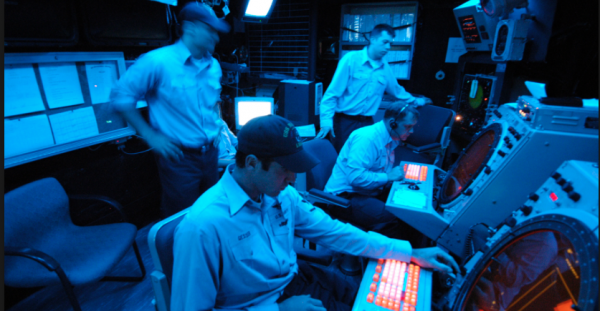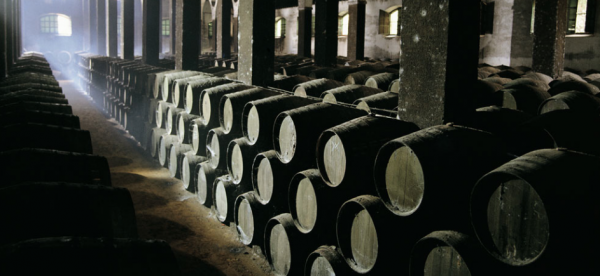
Every trend has its own secret history, beginning when it’s still too small to be noticed and ending when its momentum is spent and energetic new trends overtake and supplant it. Between these points trends live a useful life – but what exactly is a trend good for and why are we so intent on spotting them?
For many, a trend is a market indicator – a clue about where consumers will alight next and thus provide an opportunity for profit. For many others, spotting and adopting a trend early on is a way to mark themselves as cognoscenti – people uniquely in-the-know. For some others – and I guess I would put myself in this group – the primary benefit to grabbing the coattails of a speeding trend is the sheer exhilaration of being connected to something in the process of acceleration — direction and destination unknown.
Last week’s post (read it here) consisted of five of ten trends in wine that, if not already, really ought to be on your radar screen. The final five follow.
Blip No. 6. Consistency no longer seen as an unqualified positive. A key aspect of the value that Bordeaux, Champagne, Sherry, and Madeira brought to 18th and 19th century tables was that each was a blended wine engineered to smooth out variations due to vintage and the variety of sources from which wine was purchased. A blender/shipper/bodega kept large stocks of wine in hopes of having on hand whatever it needed to deal with a given situation. Consumers who appreciated the house style could count on being able to enjoy it with minor variation year after year.
Today, each of these wines is in less favor than previously in part because the new model for quality wine seems to be what I”ll call the ‘one grape / one terroir /one vintage’ approach, with Burgundy as the model and with the expression of individual terroirs it’s primary aim. It’s a system intended to highlight rather than suppress year to year variation, even if that means having a weaker wine to sell in some vintages than might otherwise be the case.
Another factor undergirding this trend is the growing interest in wines made in a naturalist style, with low or even no additions of sulfur at bottling. The result is that wines are likely to be less stable and some rather dramatic mood swings may be evident. When I interviewed importer Oscar Hernandez in 2013, he said this about his portfolio of mainly low-sulfur wines: I always find that wines develop differently when there is no inhibiting sulfur at work. Sulfur keeps fresh, fruity flavors intact – that’s why they say they use it. But, to me, sulfur preserves a wine by killing off a lot of bacteria and I don’t think it works the way it’s said to. I think what it does is make the wine consistent from bottle to bottle.

Blip No. 7. A decline in interest in vintage. Vintage used to be one of the most powerful differentiators known to the wine world and true connoisseurs were famously adept at telling one from another. Vintages still matter, but as a more rationalized approach to getting grapes ripe has taken hold more or less everywhere many fewer awful vintages have been seen per decade and wild swings in vintage quality have diminished. If, as I posit in (6), consistency as a quality factor is truly on the wane then it stands to reason that while we may still be interested in vintage as a differentiating element, we are less likely to be judgmental of less-than-ideal years. Of course, for those into the fine-wine-as-investment game, vintage will remain very important.
Blip No. 8. Drinking raw, drinking fresh. This bring us squarely into the realm of wines made in one or more shades of the naturalist style – a tricky category to define but one that (to put it as directly as possible) would like nothing better than for wine to gush unbidden and unaided from the ground as if from a spring. The idea is to interfere minimally with grapes making their way from vine to bottle; to wash hands of technology and let nature take its course. In this view, the less craft applied to wine the closer and truer it remains to its sources – and since aging is an element of craft, younger wine is by definition more natural than older wine.
The upshot of this has been that while an older generation continues to value crafted wines with years of bottle age, younger drinkers prefer to drink closer to the source whenever and however possible: and that means wine that’s both raw and fresh. No doubt our current enthusiasm for Txakolina owes something to this trend.
Blip No. 9. Coloration that’s varietally and regionally true. Students of wine are still taught that it’s important to learn how to read a wine’s appearance: to give attention to its color, intensity, and clarity. And there was a time when effort expended would be rewarded with useful information. Much less that can be reliably gleaned from observing these things today, simply because once winemakers learned that consumers associated darker red wine with quality the rush was on to intensify hues across the board. With few exceptions, all red wines are more deeply died than they were 30 years ago, and frankly more difficult to “read” on this basis alone.
The sole exception to this seems to be – you guessed it – the naturalists, whose disinclination to engineer their wine to some marketing profile seems to have immunized them from this rather cynical behavior. Will their continued success influence more mainstream producers to put the brakes on ever more opaque red wine? I’m hoping so, though I don’t see many signs of it yet.
Blip No. 10. A shift from classical to romantic, even Gothic, forms. One of the more remarkable recent turnabouts has been a marked rise in interest in wine that departs from established norms and approved sources. Wines made from ungrafted, pre-phylloxera vines; whites vinified as reds and vice versa; grapes grown on exotic terroirs (the slopes of volcanos; on islands so windy vines are braided into wreaths that never rise more than a few inches from the ground) wines aged undersea — are so sought after in some niche markets that they seem to have entirely displaced more conventionally-made wine, no matter how finely-crafted or long-established.
And it’s not just the way wines are made or where they’re from. Exotic tastes are trending, too, with niche-dwelling consumers showing a startling interest in flavors and aromas that were once classified as faults: including those resulting from oxidation, brettanomyces, and volatile acidity. We tend to think of these as “complexing elements” now, and see them more as interesting features – albeit rather outré ones – than the damning shortcomings they were once considered to be. In true romantic style, younger drinkers are seeking out the remote, the antiquated, the once-contemptible, the outliers of the wine world.
When considering wine of this sort I like to remind myself that a romantic reaction is sure to follow as the night the day a too-rigid adherence to established rules and values. Also that while classicism gave us Versailles, Voltaire, and Mozart, romanticism, reacting against its strictures, gave us Walt Whitman, Hector Berlioz, and Mary Shelley’s Frankenstein.
What means will the wine rebels of the future find to tweak the established order of things? I have no idea, but it’s intriguing to consider.
– Stephen Meuse
Got a wine question? Email me at stephen@centralbottle.com Follow Stephen Meuse